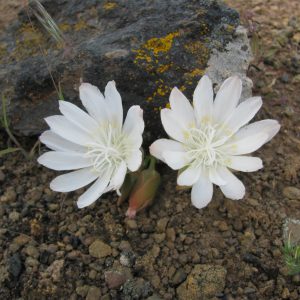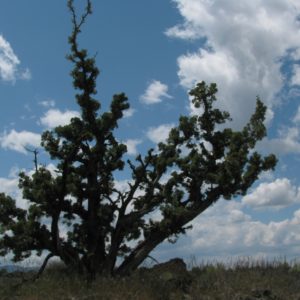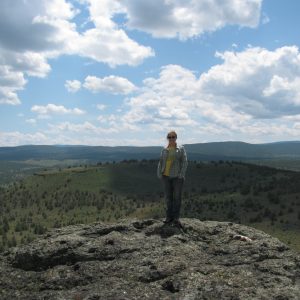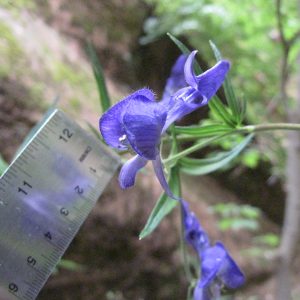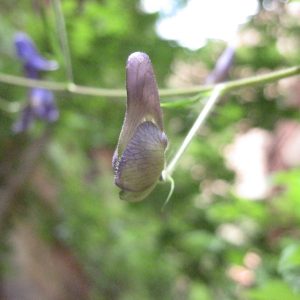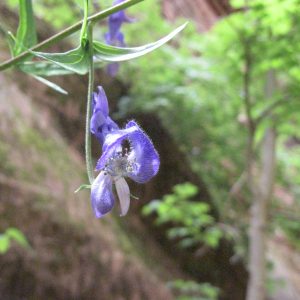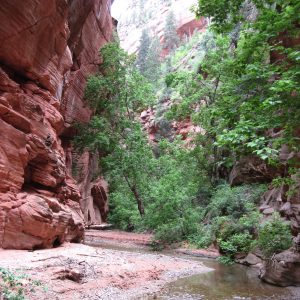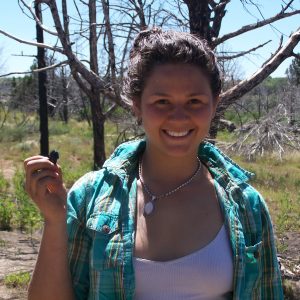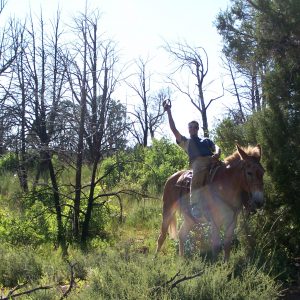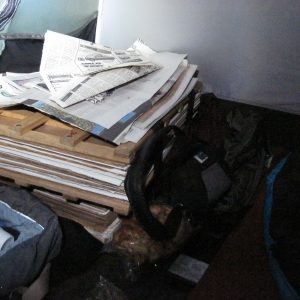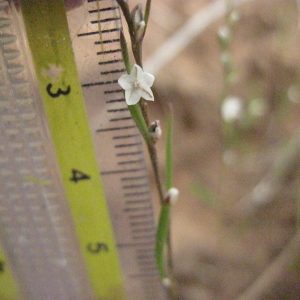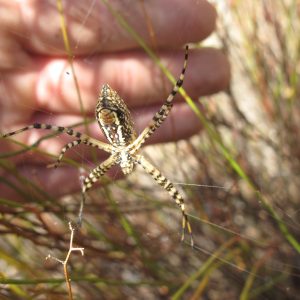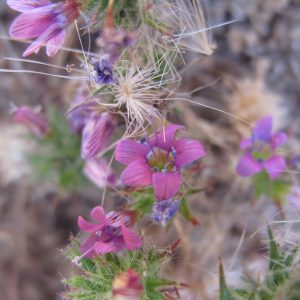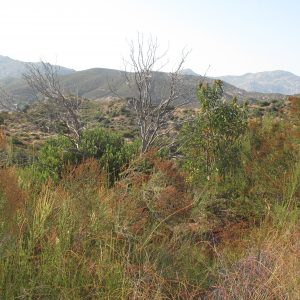After being at the Bend Seed Extractory for nearly a year, I can open most seed collections and know immediately which cleaning method will bring the best results. This was not true of my “challenge of the week”, Grindelia squarrosa (GRSQ). Members of the aster family are usually difficult because the seeds are often fragile and come accompanied by a lot of vegetative material. This collection of GRSQ, or curlycup gumweed, held true to those characters of the aster family but had some additional challenges – the exterior of the flower heads were sticky and prickly.
Without the sticky material, I would have no hesitation to put this collection in a brush machine, but my worry was that the brushes and the seed would become coated with the goo, making the finishing process much more difficult. So, what to do? Whenever I find myself asking this question, I turn to the incredibly knowledgeable staff at the extractory for advice. The recommendation was to use baby powder, and lots of it. We often add powder or corn starch to seed lots to control static, but I always forget that it can be useful for coating sticky and coarse-hairy trash so that seed won’t attach to it. I jumped on this advice and decided to change the brushes in my machine to paddles, just in case the goo was too much for the powder.
One pass through the brush machine after a good dousing with powder and…success! The flower heads were broken up and the seeds were flowing freely.
Considering that this species was not only tricky to clean, but smelled like dirty gym socks and released itchy hairs into the air, I was happy to send it along to the next phase of cleaning. I hope it doesn’t pass my way again, but at least it taught me a few new tricks. On to the next challenge…
regards from Bend,
Sarah Garvin







